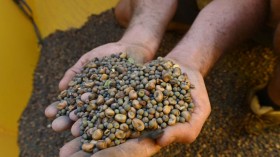After plans to build a new theater in Navy Pier were announced the following year, curators intervened to save the dying palm trees.
Sadly, the palm trees are too large to fit in a private property.
Navy Pier Palm Trees as Garden of Decay
For nearly three decades, the Crystal Gardens at Navy Pier offered a tranquil retreat, but its closure two years ago for an unbuilt immersive theater now threatens the massive, decaying trees.
Facing potential demolition next year, a grassroots endeavor strives to rescue the struggling palms.
The iconic palms, featured in the Halloween-themed "Garden of Decay," became symbolic of the dying garden, as attendees like Nate Murawski observed.
Nina Salem and Tex Watson, curators in a taxidermy museum, were informed of the plants' jeopardy after the event, and took action, relocating around 250 plants with the help of friends. While most found new homes, the towering palm trees, over 20 feet tall, linger, challenging relocation due to their size.
Salem continues to seek an organization willing to adopt these iconic symbols of the Crystal Gardens before potential demolition.
New Theater Illuminarium
Illuminarium, set to demolish the space next year, is uncertain about transferring or preserving the existing trees. The new site will showcase virtual landscapes. Despite efforts by Navy Pier in the fall of 2021 to relocate smaller plants, larger palms, having reached their lifespan, pose a challenge due to size and cost, dissuading local nonprofits.
A contractor's activity near the garden hints at impending changes. The demolition date remains undisclosed, leaving the fate of the cherished garden in limbo.
CEO Alan Greenberg's uncertainty added to concerns about the iconic palms' future amidst the transformation.
Rescue and Conservation Efforts
Despite community resistance, the Chicago City Council approved the 2021 Illuminarium project, prompting a petition signed by over 23,000 people to save the existing garden.
Celine Wysgalla expressed disappointment over the planned demise of decades-old palms and called on Illuminarium to relocate or integrate them into the exhibit. However, the search for a new home proved challenging, with local conservatories unable to accommodate the large plants.
For nearly three decades, the Crystal Gardens was a free getaway at Navy Pier.
But the palm trees have been left to decay since it was closed two years ago for an immersive theater that still hasn’t been built.
Story:https://t.co/mxNIiMd0YU
Photos📸: Pat Nabong/Sun-Times pic.twitter.com/VhTOjt9qzh— Chicago Sun-Times (@Suntimes) November 11, 2023
Brian Austin of NPK Associates Inc. highlighted the need for a rare 30-foot-tall glass conservatory, citing both cost and transit risks.
The Garden of Decay show incorporated the trees, leading to a grassroots effort to save them, though challenges persist due to the lack of suitable alternatives and community ties.
Also read: Olive Oil Price Hike Causes Wave of Opportunistic Illegal Loggers, Grove Robbers Outside Athens
Dying Palm Trees in Another Location
The California fan palm, often mistaken for a tree, is not native to most of the state but is emblematic of its deserts and coastline. However, the Sacramento Tree Foundation, emphasizing greater benefits, doesn't recommend planting palms in the region.
According to Alex Binck, a community arborist, other trees offer more shade, cooling, and pollution absorption due to their larger canopies.
With climate change impacting temperatures, cities like Los Angeles and San Francisco are reevaluating the role of palm trees in urban ecology.
Despite debates, the Capitol project in Sacramento plans to replace removed or deceased trees with at most a ten-foot palm, acknowledging the irreplaceability of century-old specimens.
Relatd Article: Rollercoaster Severe Weather Forces Texas Pecan Trees to Dangerously Self-Prune at the Wrong Time
© 2024 NatureWorldNews.com All rights reserved. Do not reproduce without permission.





